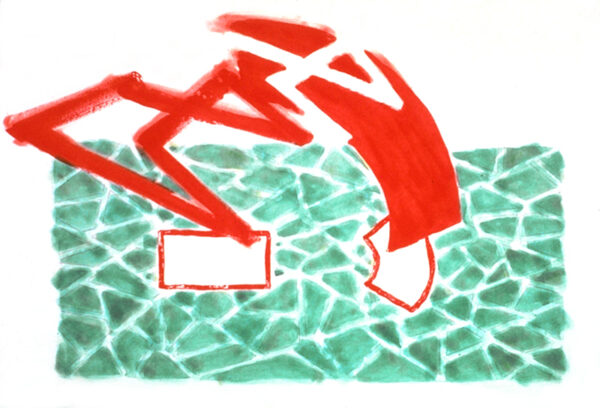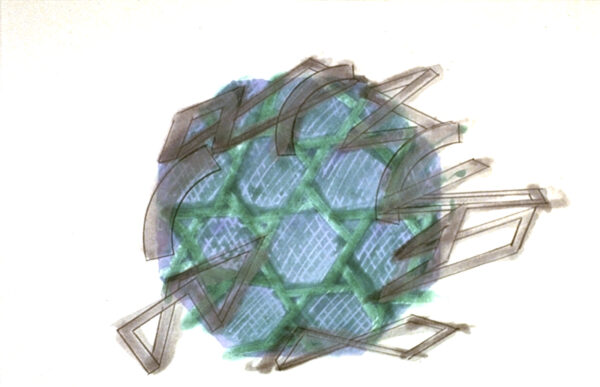Richard Smith (1931-2016) was a British painter and printmaker who had “a masterly handling of form, color, and touch,” as a 1992 Art in America article reported. Positioned between two art historical movements, he developed his painting style from abstract expressionism and his inspiration in part from commercial culture typically associated with pop art. Formal restraint, repetition of form, and precise implementation of color defined Smith’s oeuvre for more than six decades.
Born in 1931 in Letchworth, Hertfordshire, Smith studied at the Luton School of Art and Design, served two years with the Royal Air Force in Hong Kong, returned to education at St. Albans School of Art, and attended the Royal College of Art where he graduated in 1957. In 1959, he was awarded the Harkness Fellowship enabling him to spend two years in New York City. While there, he was influenced by American popular culture, in particular Times Square billboards and color-page, magazine advertisements. Smith used corporate logos, motion pictures, and commercial packaging as points of departure in the paintings featured in his first solo exhibition at Richard Bellamy’s seminal Green Gallery in 1961.
Also in 1961, after his first exhibit in New York, Smith began showing with Kasmin Gallery, London (which also represented David Hockney). He was given his first retrospective shortly thereafter in 1966 at Whitechapel Gallery, London. In 1970, Smith was chosen to represent Britain in the Venice Biennale with a new body of work. In it, he began pushing the physicality of painting beyond a flat, two-dimensional surface. In the 1970s and ‘80s, he continued to expand the boundaries of the traditional canvas with a series that became known as “kite paintings.” Wood frames were replaced by light aluminum rods that protruded markedly into the viewing space and (as William Grimes wrote in the New York Times) “formed crosses, zigzags and arcs from overlapping planes and repeated square, rectangular and curved shapes.” These “kite paintings” were shown in several exhibitions, most notably a major retrospective, Seven Exhibitions 1961-75, at the Tate Gallery in 1975.
Smith moved permanently to New York in 1978 with his wife and children. He continued to paint, exhibit in both Europe and the United States, and work on large-scale commissions for prominent restaurants and national airports until his death in 2016. His work has been featured at the Royal Academy of Arts, London; the Solomon R. Guggenheim Museum, New York; and SFMOMA, San Francisco; and is part of the collections of the British Museum, London; the Hirshhorn Museum and Sculpture Garden, Smithsonian Institution, Washington, D.C.; the Metropolitan Museum of Art, New York; the Tate museums and art galleries, London; and the Atlanta, Louisville, and John F. Kennedy airports. Richard Smith also worked with several print publishers over the years, including Bernard Jacobson Graphics, London; Edition Domberger, Germany; Flowers Gallery, London; and Crown Point Press, San Francisco. In 1985 at Crown Point Press, he created four etchings inspired by set designs that he made for the 1982 Wildlife ballet, choreographed by Richard Alston.
Art historian Marco Livingston has lauded Richard Smith’s “joyful embrace of glamour and prismatic color” and pointed to his important place at the forefront of the Pop art and Color Field movements of 20th century painting. Smith is represented by Flowers Gallery in New York and London. He is survived by his wife and two sons.
-Katharine Fulton-Peebles, Crown Point Press



